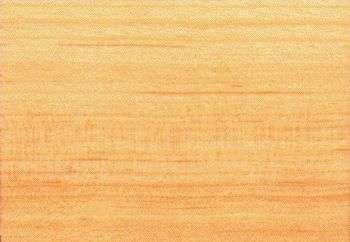
Abotoasebie (Pentadesma butyracea)
Family: Guttiferae
Common names: Abotoasebie, Agba, Aghe, Agyiapa, Akanti, Asuaindokun, Black mango tree, Bromabina, Bromabine, Butter tree, Candle butter tree, Candle tree, Chewstick, Ebot, Ehukei, Ehurike, Ekuso, Esoedokuno, Igbofia, Ijeni udegbu, Iroro, Izeni, Izeni eze, Ka-yoth, Kampampipampi, Kandika, Kiasose, Kiasoso, Kisidwe, Koma, Koma mufike, Komdi, Krinda, Lami, Lon, Lorokiere, Mbeke-wa, Mdayen, Mukomo, Njolei, Okarora, Oro, Orogbo, Orugbo erin, Ossa, Ossel, Ossol, Otelimo, Oze, Pagya, Pegya, Peigya, Pija, Pissaleboko, Seowe, Soe-kone, Soinankaw, Sokai, Solei, Suankyi, Suen, Sunkyi, Tallow tree, Tiakukebia, Udegbi, Udia ebiong, Waye, Waye-kpay, Weh-ti, Wotera
Distributed in: Benin, Cameroon, Congo, Gabon, Ghana, Guinea, Ivory Coast, Liberia, Nigeria, Sierra Leone, Togo, Zaire (Africa)
Common uses: Agricultural implements, Boat building (general), Boxes and crates, Flooring, Fuelwood, Furniture, Heavy construction, Joinery, Light construction, Millwork, Mine timbers, Oars, Plywood, Poles, Posts, Railroad ties, Sporting Goods, Turnery, Vats, Vehicle parts
Tree size: Trunk diameter is 100-150 cm
Colors: the heart isRed, Yellowand the sapwoodWhite to yellow, Yellow.The grain isWavy, the textureMediumand the lusterSlightly lustrous
Natural durability: Susceptible to insect attack, Susceptible to marine borer attack
LightInduced Color Change: None
Kiln Schedules: Dry at a slow speed
Kiln Drying Rate: Naturally dries slowly
Drying Defects: No twisting or warping, Slight end splitting
Ease of Drying: Slowly
Tree Identification: Bole/stem form is straight
Comments: General finishing qualities are rated as good
Boring: Easy
Cutting Resistance: Cutting resistance with dry wood is variable
Mortising: Easy to mortise
Moulding: Easy to mould
Movement in Service: Easy to mould
Nailing: Poor to Very Poor , Pre-Boring Recommended
Planing: Fairly Easy to Very Easy
Resistance to Impregnation: Sapwood is permeable
Response to hand tools: Easy to machine
Polishing: Very Good to Excellent;
- Numerical data Metric
- Numerical data English
- Strength properties
- References
 |
 |
 |
 |
| Item |
Green |
Dry |
Metric |
| Specific Gravity |
|
|
|
| Density |
|
833 |
kg/m3 |
| Bending Strength |
1110 |
1636 |
kg/cm2 |
| Crushing Strength |
573 |
801 |
kg/cm2 |
| Hardness |
|
945 |
kg |
| Impact Strength |
|
|
cm |
| Shearing Strength |
|
|
kg/cm2 |
| Stiffness |
152 |
175 |
1000 kg/cm2 |
| Tangential Shrinkage |
8 |
|
% |
| Radial Shrinkage |
5 |
|
% |
| Weight |
817 |
721 |
kg/m3 |
| Maximum Load |
|
|
cm-kg/cm3 |
| Toughness |
|
|
cm-kg |
| Static Bending |
|
|
kg/cm2 |
|
 |  |  |  | | Item | Green | Dry | English | | Bending Strength | 15792 | 23275 | psi | | Density | | 52 | lbs/ft3 | | Hardness | | 2085 | lbs | | Maximum Crushing Strength | 8154 | 11402 | psi | | Stiffness | 2167 | 2494 | 1000 psi | | Weight | 51 | 45 | lbs/ft3 | | Radial Shrinkage | 5 | | % | | Tangential Shrinkage | 8 | | % | | Volumetric Shrinkage | 11 | | % | |
Density (dry weight) = 53-60 lbs/cu. ft
Shrinkage, Tangential = fairly large
Shrinkage, Radial = moderate
Bending strength (MOR) = high
Shrinkage, Tangential = moderate
Max. crushing strength = high
Bending strength (MOR) = very high
Shrinkage, Tangential = large
Shrinkage, Radial = large
Shrinkage, Radial = fairly large
Modulus of Elasticity (stiffness) = high
Max. crushing strength = very high
Hardness (side grain) = medium
Density (dry weight) = 67-75 lbs/cu.ft
Density (dry weight) = 61-67 lbs/cu. ft
Shrinkage, Volumetric = small
Shrinkage, Volumetric = large
Hardness (side grain) = very hard
Density (dry weight) = 46-52 lbs/cu. ft.
Bending strength (MOR) = medium
Bolza, E., Keating, W.G.,1972,African Timbers - the Properties, Uses and Characteristics of 700 Species,C.S.I.R.O. Div. of Building ResearchBrenan, J.P.M., Greenway, P.J.,1949,Check-lists of the Forest Trees and Shrubs of the British Empire,Imperial Forestry Institute, Oxford No.5 Tanganyika Territories Part 2Cooper, G.P., Record, S.J.,1931,The Evergreen Forests of Liberia,Yale School Forestry Bulletin,31,pp1-153Erfurth, T., Rusche, H.,1976,The Marketing of Tropical Wood A. Wood Species from African Moist Forests,F.A.O. Forestry DepartmentHedin, L.,1930,Etude sur la Foret et les Bois du Cameroun,Haut-Commissaire de la CamerounIrvine, F.R.,1961,Woody Plants of Ghana,O.U.P. LondonKeay, R.W.J.,1964,Nigerian Trees Vol.2,Nigeria Federal Department of Forest Research, IbadanKennedy, J.D.,1936,Forest Flora of Southern Nigeria,Government Printer LagosKryn, J.M., Forbes, E.W.,1959,The Woods of Liberia,U.S.A. Department of Agriculture,Forest Products Laboratory, Madison,,Report No. 2159Kunkel, G.,1965,The Trees of Liberia,German Forestry Mission to Liberia Report,No.3Lebacq, L., Dechamps, R.,1967,Contribution a un Inventaire de Forets du Nord-kasai,Musee Royal de L'Afrique Centrale Belgium Annals Series 8 No.5Sallenave, P.,1955,Proprietes Phyiques et Mecaniques des Bois Tropicaux de l'Union Francaise,C.T.F.TSavill, P.S., Fox, J.E.D.,1967,Trees of Sierra LeoneTakahashi, A.,1978,Compilation of Data on the Mechanical Properties of Foreign Woods (Part,III) Africa,Shimane University, Japan, Research Report on Foreign Wood No. 7Taylor, C.J.,1960,Synecology and Silviculture in Ghana,University College of Ghana Thomas Nelson and SonsUnwin, A.H.,1920,West African Forests and Forestry,T. Fisher Unwin Ltd. LondonVoorhoeve, A.G.,1965,Liberian High Forest Trees,Centre for Agric. Publishing and Documentation, Wageningen
|








